Yellowstone National Park took drastic measures to stop a male grizzly bear from wandering too close to visitors and eating the food they litter on the ground.
The bear had become infamous for flipping over 800-pound bear-resistant dumpsters and even developed his own method for breaking into smaller, concrete-mounted trash cans in order to feed on human food.
According to a press release put out by Yellowstone National Park, between April 3 and May 13 the beast frequently wandered near popular tourist spots like Old Faithful, the Nez Perce Picnic area, and the Midway Geyser Basin parking lot in hopes of finding a snack.
The Wyoming-based park said the 11-year-old, 400-pound bear became accustomed to human food and trash over the course of a month and had become ‘food-conditioned’ and ‘posed a risk to public safety.’
Photos of the damage were posted on social media.
As a result, park rangers decided to trap and kill the bear in mid-May ‘to ensure public safety and reduce the chances of other bears becoming habituated to human food.’
Yellowstone noted they have not had to use this ‘management action’ since September 2017 when a rogue grizzly began damaging tents and finding food in nearby campsites.
Bear Management Biologist Kerry Gunther said, ‘We go to great lengths to protect bears and prevent them from becoming conditioned to human food.
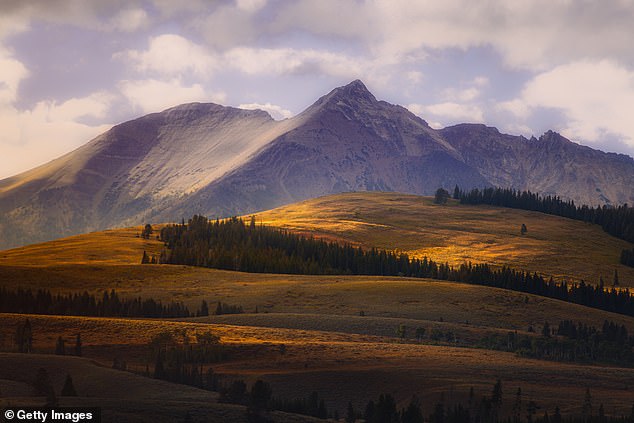
Yellowstone National Park took drastic measures to stop a local male grizzly from wandering too close to visitors
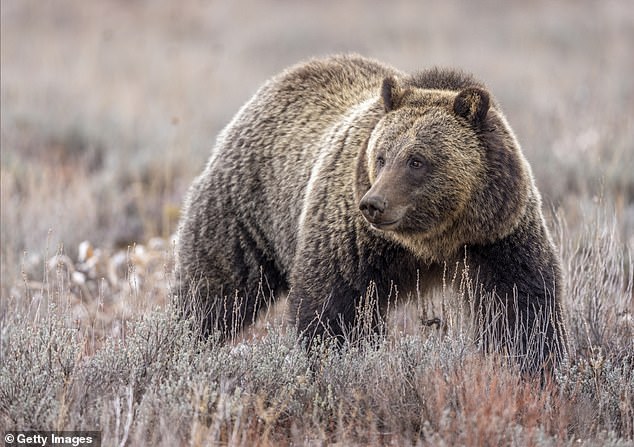
The 11-year-old, 400-pound bear became accustomed to human food (stock photo)
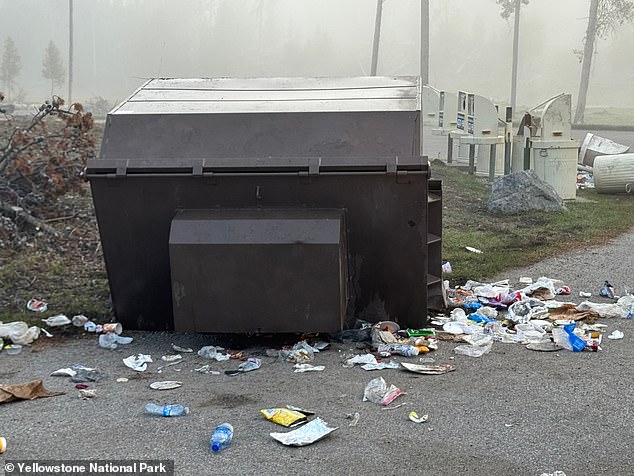
The bear had become infamous for flipping over 800-pound bear-resistant dumpsters (pictured)
‘But occasionally, a bear outsmarts us or overcomes our defenses. When that happens, we sometimes have to remove the bear from the population to protect visitors and property.’
Unfortunately for Yellowstone, visitors are outraged by this decision. Hundreds of people commented under the famed National Park’s statement, condemning them for punishing an innocent bear due to human error.
Many pointed out that the popular tourist spot was situated on the bear’s land and felt that the rangers had an obligation to protect the bears from humans, not the other way around.
‘This is outrageous. Who is protecting the bears? Humans need to give animals somewhere to be where there is no human interference.’
‘You don’t kill a bear for that, how ridiculous. Yellowstone is BEAR territory. Humans are the invader.’
Others blamed visitors for making a mess, leaving trash and food for grizzlies like this one to find.





‘Maybe they should keep it cleaner instead of killing hungry bears!!!’
‘Who is allowing this trash all over the park. This is absurd. The land belongs to wildlife.’
One user simply called for animal lovers to stop visiting the park altogether.
‘Stop murdering endangered species! #BoycottYellowstone.’
In response to the backlash, park officials noted that relocation or placement in a zoo or wildlife conservatory were not viable solutions.
They said that adult bears, like the one they put down, grow too accustomed to their surroundings and are unable to acclimate to a new home.
If moved further away, the likelihood of the bear finding its way back was too high.
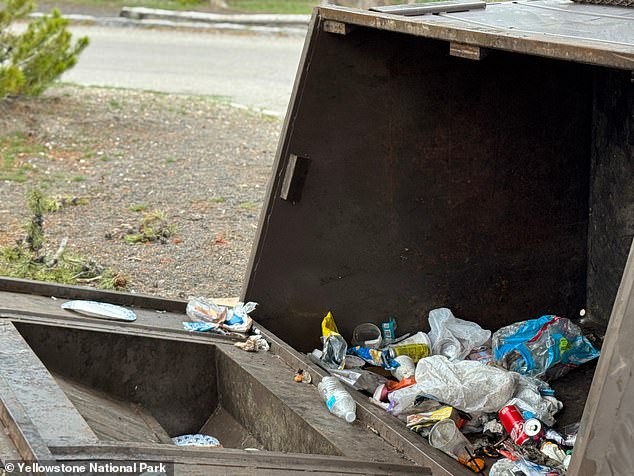
‘We go to great lengths to protect bears and prevent them from becoming conditioned to human food. But occasionally, a bear outsmarts us or overcomes our defenses’
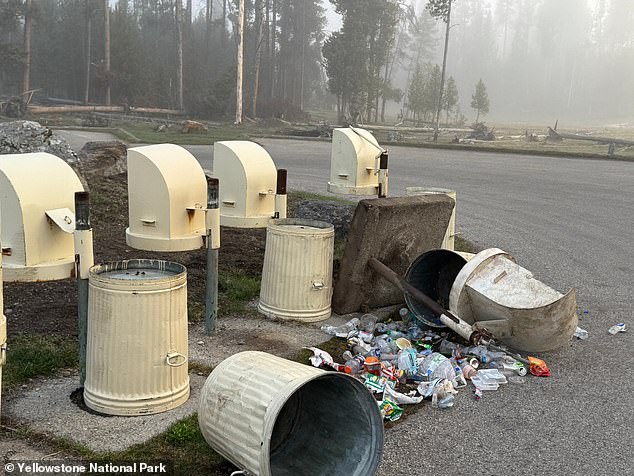
The bear developed his own method for breaking into smaller trash cans that were mounted to the concrete in order to feed on human food
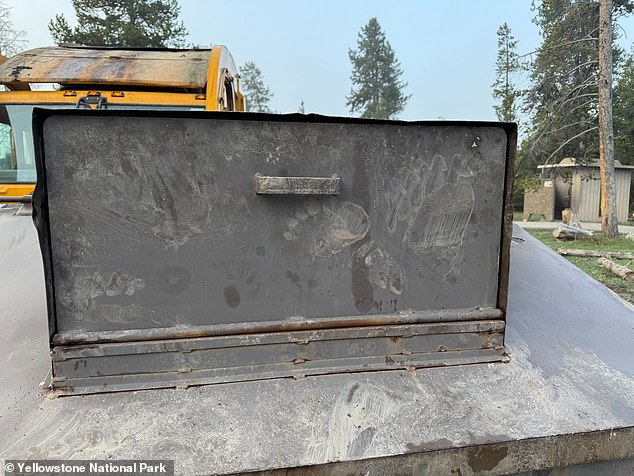
Visitors should use their bear-resistant storage lockers, food storage devices, garbage cans and dumpsters throughout the park
‘Our long-term monitoring of relocated bears confirms very low success rates in the park,’ they wrote.
‘Since the 1970s, 54% of grizzly bears that were involved in conflicts and relocated in Yellowstone caused more conflicts after their relocation.’
Because of that, termination was decided. Officials believed it was the only way to make sure this grizzly didn’t bother any more guests.
Yellowstone continued to remind guests to maintain accordance with their bear management plan. Visitors should use their bear-resistant storage lockers, food storage devices, garbage cans and dumpsters throughout the park.
‘Yellowstone reminds all visitors that utilizing these bear safety measures remain crucial in ensuring public safety and preventing wildlife from developing dangerous habits.’